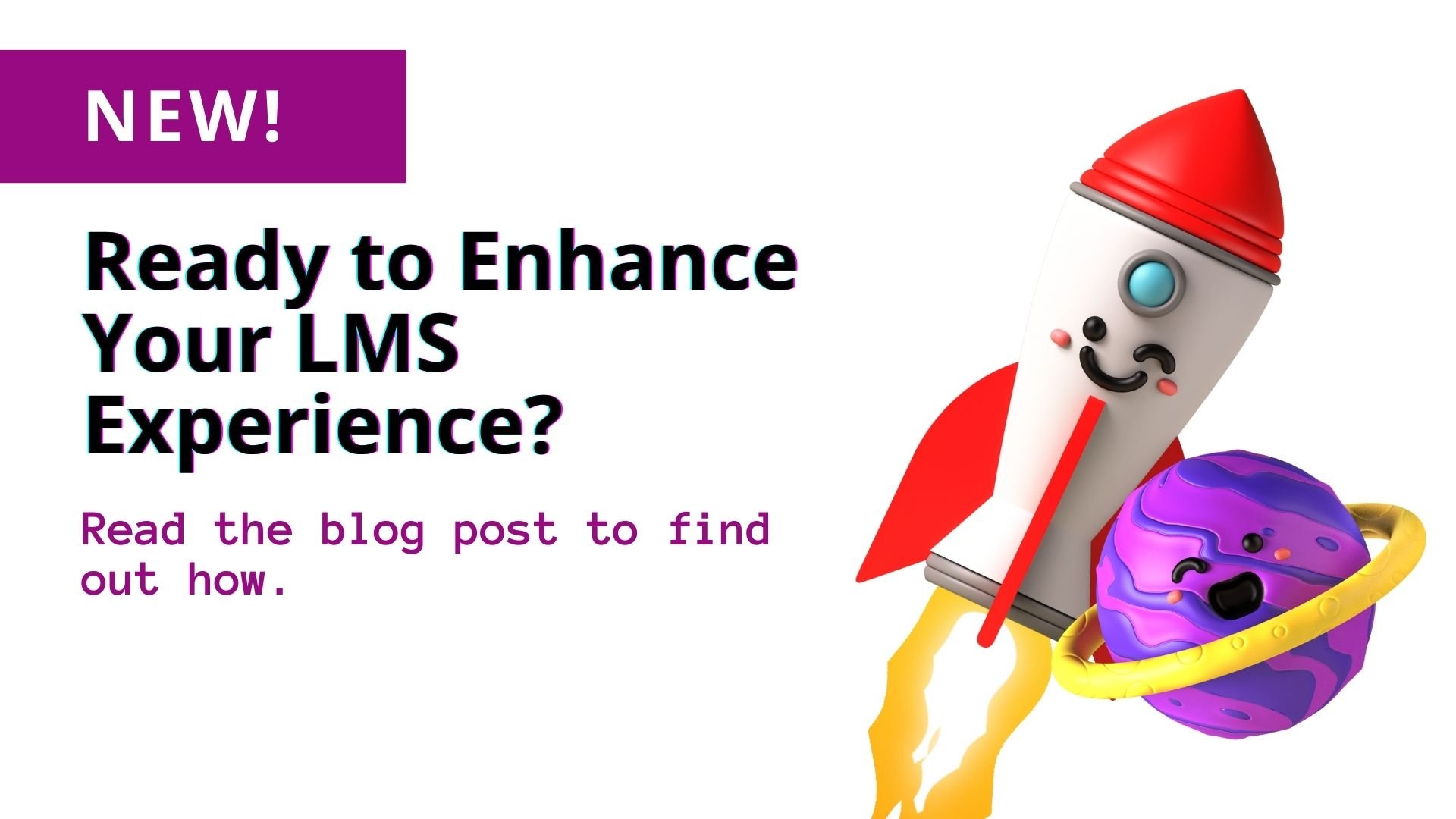It’s no secret that remote training has been highly utilized throughout the coronavirus pandemic. As increasing numbers of employees were forced to work from home due to social distancing guidelines, companies invested more and more money into eLearning technologies that enabled remote training.
The benefits of remote training are remarkable. First and foremost, it gives every employee access to the training they need. In many cases, learners prefer remote training to traditional, in-person training. To deliver remote training, most companies implement eLearning software, such as an LMS system.
Not every remote training program is effective. By ensuring your remote training strategy includes a few key elements, you can increase the chances that it will meet the needs of your workforce.
Does Your Remote Training Program Include These 5 Things?
There are a few specific elements every remote training strategy should contain. Without them, the training won’t have the desired effect, and companies won’t receive an optimal ROI for their training investment. They include:
- Soft skills training
- Mobile accessibility
- Knowledge sharing
- Virtual social interaction
- Interactivity
The more of these elements a remote training strategy, course, or program has, the more likely it is that it will be successful.
Soft Skills Training
Remote training should equip employees with soft skills. Why? Because soft skills are “evergreen” (i.e., always relevant, helpful, and complimentary to someone’s job role). Additionally, imparting certain soft skills to learners will help them participate fully in remote training and contribute more to any team they are on. A couple examples of these soft skills include empathy and feedback. According to Forbes,1 here are some other soft skills workers need most this year:
- Accountability
- Collaboration and teamwork
- Compliance
- Critical thinking
- Influential leadership
- Originality
- Productivity
Forbes also said service orientation was an important soft skill to workers at the current time. The source defined service orientation as “The ability to anticipate, identify, and meet people’s often unspoken needs through assistance, products, or services and the drive to generate customer satisfaction and loyalty.”
You can purchase soft skills training courses off the shelf from a third-party vendor, upload them to your LMS system, and distribute the training to employees. Track learners’ training progress using LMS reporting. If you can’t find a soft skills training course your workforce really needs, consider having it created by in-house L&D experts. Alternatively, you could outsource the project to a remote training creator.
Mobile Accessibility
Employees expect to be able to access training at a moment’s notice. They want the option of engaging in training whenever the time is good for them, and from whatever personal device they have on hand. In order to cater to learners in this way, your company’s remote training courses and programs must be accessible via mobile device. eLearning Industry stated,
“...most employees and learners now prefer to get online information via their mobile devices. That's because, with mobile learning, you need not worry about the time or your location...(as long as you have) your smartphone and internet connection.”2
The source cited significant mobile learning benefits, such as higher course completion rates and better rates of knowledge retention.
To promote mobile learning, L&D teams must ensure remote training content is designed in such a way that allows learners to interact with it on their mobile devices. An LMS system with a mobile learning feature makes this automatic.
With the TOPYX LMS system mobile learning feature, learners can access remote training content on demand, regardless of location or time zone. A user simply needs an Internet connection and a mobile device to engage in mobile learning. Learn more by requesting a free LMS demo of TOPYX.
Keep Learning: “How to Deliver Mobile Learning for Remote Employees During COVID-19”
Knowledge Sharing
Peer-to-peer learning, or knowledge sharing, is one of the most powerful forms of learning. Collectively, one workforce possesses a profound volume of knowledge. What’s more, that knowledge is incredibly diverse. By helping remote learners share knowledge with their peers, you will increase their engagement with training and foster stronger employee relationships. Not just that, but promoting knowledge sharing can save your company money. In mid-2020, Training Industry stated,
“A recent Panopto report found that U.S. businesses could save anywhere from $2.7 million to $265 million by improving knowledge-sharing…”3
One way to foster knowledge sharing in a remote workplace is to enable learners to communicate on online forums where they can share training course notes. There should be at least one moderator assigned to each forum to ensure the content being shared is appropriate. LMS systems have built-in forums and online communities for learners that can be controlled by administrators.
Another way to promote knowledge sharing in a remote workplace is to incentivise knowledge sharing. You can do this by mentioning learners with the best collaboration skills in announcements and emails. Be sure to specify what content they shared and explain why it will help others. This will provide a concrete example of what knowledge sharing is. You could also offer gift cards to those who share valuable, relevant knowledge fearlessly. You may even want to give learners who share the most valuable content a small bonus.
Also, if it is feasible, split learners who are participating in the same course into small teams of 5 or 6 people. Schedule a couple of virtual meetings where learners can debrief about what they are getting from the eLearning course. Ideally, there would be a team lead who would ensure that all participants have their cameras turned on and are engaging in the conversation. Those who share helpful knowledge should be rewarded, if only in a “thanks for your hard work” email.
Virtual Social Interaction
Unfortunately, many employees who must work from home cannot get the in-person social interaction they need at this time. Virtual social interaction is the next best thing: it is estimated to be up to 80 percent as effective as in-person interaction. Fast Company explained,
“People who trust each other work better together, and face-to-face interaction facilitates that. Video conferencing can produce many of the benefits of face-to-face interaction…”
The source went on to say video conferencing, or virtual social interaction, is about 80 percent as effective as real-life interaction.
So, how do you promote virtual social interaction? The answer is simple: use LMS social learning tools. LMS systems feature built-in social learning tools that make virtual connection easy for learners. LMS system social learning tools include:
- Announcements
- Articles
- Calendaring
- Chat
- Documents
- Events
- Forums
- Marketing tiles
- Media gallery
- Sponsor links
- Web conferencing
Each of these tools helps learners connect with one another virtually. Today, it is essential that organizations make these tools available to their remote workers. These employees are often starved for social interaction. While online interactions don’t make up for in-person conversations, they still provide a valid solution to the dilemma of employee isolation in the age of COVID-19.
Interactivity
When you are designing remote training, it is essential to create interactive learning experiences. Interactive learning tends to be much more engaging for most employees. Remote learners are likely already having issues with learning engagement as they have gone from a familiar in-person training model to a remote training model. Including elements of interactivity in remote training will help capture a learner’s attention and keep them on the edge of their seat, from the first minute of training to the last. Create a set of best practices for promoting interactive remote training before adding elements of interactivity to your remote courses. Here are a few ideas to get you started:
- Make sure remote training courses include several interactive 360 degree images and videos.
- Add simulations so that learners can practice their new skills.
- Create branching scenarios.
Also, include games in remote training. According to Review 42, “gamification participants score 14% higher (on) skill-based assessments.”5 The source also stated that 95 percent of workers enjoy participating in gamified elements of their work.
Related Reading: “4 Tips to Make Online Employee Training More Effective for Remote Workers”
Deliver Remote Training with TOPYX LMS System
Do your remote training programs and courses include soft skills training, mobile accessibility, opportunities for knowledge sharing, virtual social interaction, and interactivity? If not, they probably won’t be as effective as they have the potential to be. Optimize remote training with TOPYX LMS system. TOPYX has every feature you need to deliver the best possible training to your workforce. Request a free LMS demo of TOPYX to discover if it is right for your organization.
References:
- Forbes. https://www.forbes.com/sites/markcperna/2021/01/12/the-top-25-soft-skills-remote-workers-need-in-2021-and-3-ways-to-get-them/?sh=6dfd6839d78b.
- eLearning Industry. https://elearningindustry.com/benefits-and-challenges-of-mobile-learning.
- Training Industry. https://trainingindustry.com/articles/remote-learning/how-to-drive-learning-and-knowledge-sharing-in-a-remote-workplace/.
- Fast Company. https://www.fastcompany.com/3051518/the-science-of-when-you-need-in-person-communication.
- Review 42. https://review42.com/resources/gamification-statistics/.





